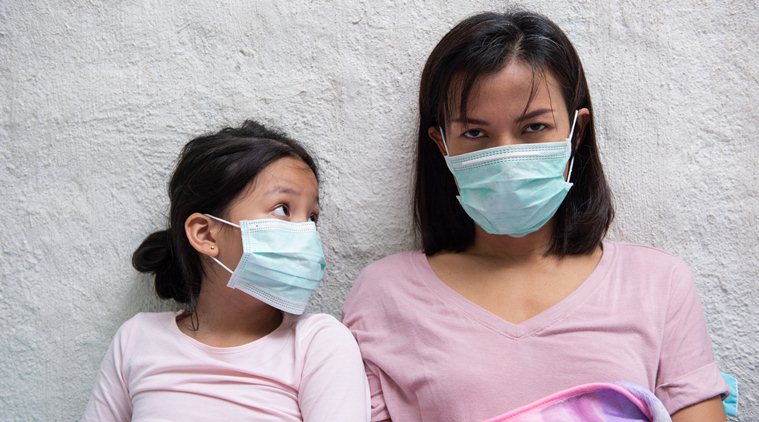Air pollution: 7 questions your child might be asking, answered
Even if your child’s school has an installed air purifier, there is no guarantee that your child is safe, as it might be using the air from the corridors.
 It’s a misconception that if your child is not going out, she’s safe. (Source: Thinkstock/Getty)
It’s a misconception that if your child is not going out, she’s safe. (Source: Thinkstock/Getty)
By Amol Arora
The frequent declaration of holidays for schools by the government in the wake of rising air pollution has led to many questions in the minds of the children. Here are some frequently asked questions (FAQs) surrounding air pollution that might be bothering your child.
1. I’m avoiding playing outside but is the indoor air safe to breathe?
It’s a misconception that if your child is not going out, she’s safe. The fumes coming from perfumes, incense sticks (agarbattis), from furniture and wall paints to the cooking lead and elevated carbon dioxide levels, make the indoor air quality 2 to 5 times more dangerous than the outside air. So what can you do about it? To begin with, use air purifiers. Apart from this, do your dusting with a wet cloth and use exhaust fans extensively.
2. Can using an air mask outside keep me safe?
If your child wears a surgical mask outdoors, then it surely is better than nothing but still not good enough. Going for an N95 or an N99 mask can do the needful. Also, the mask should fit snugly around the nose without any open areas.
3. Am I safe from the pollution sitting inside our car?
It’s a common notion that sitting inside the closed doors of your cars, you are safe from the pollutants outside. But the reality is, due to high temperatures inside a parked car, all the interiors like the seats, the plastics, the panelling, and the paint release volatile organic compounds (VOCs), increasing the risk of lung cancer and other respiratory disorders. So it’s important that prior to driving, you roll down the windows for a few minutes, especially when the car is parked overnight or is in the sun for too long. After closing the windows, the fan or air-conditioner should be used, keeping the settings to re-circulation of the inside air only, rather than outside air.
4. Can we use indoor plants in our home to stay safe from pollution?
Houseplants have a great reputation of being natural air purifiers, but the fact is they contribute to a really insignificant amount of oxygen, much less than the amount we consume. In fact, indoor plants might be producing more CO2 through respiration than oxygen through photosynthesis. Also, these plants should be used in conjunction with an air purifier, so that the dust and the particulate matter doesn’t settle on their leaves, and they are able to breathe properly.
5. Can’t we reduce the air pollution with electric vehicles?
If you think air pollution is just a temporary phase and can be easily tackled by switching to electric vehicles, then unfortunately, you are mistaken. No doubt, electric vehicles don’t have any exhaust pipe emissions, but due to the heavy weight of their batteries, they still contribute to road dust and suspended particulate matter (PM) through brakes, and wear and tear of the tyres. To bring about a major difference, we need to make a transition to solar powered vehicles and improve public transport. Pushing for electrical vehicles alone won’t help deal with the air pollution crisis.
6. My school has installed air purifiers, so am I safe?
Even if your child’s school has an installed air purifier, there is no guarantee that your child is safe, as it might be using the air from the corridors. Every time the classroom doors open, the purification process has to begin all over again. Until you’ve made sure that your child’s school has a centralised air purification system that does not recirculate the same air again and again, your child is at risk. If all the air enters your child’s school building after proper treatment and dehumidification, with no air being taken directly from outside, there should be no cause of worry.
Air pollution: 5 Ayurvedic remedies to help your child build immunity
7. Does living in a polluted environment help me build immunity against it?
When your child is breathing polluted air, it only disrupts the immune system and does not, in any way, develops body’s resistance against it.
Hope this helps you find answers to some of the questions concerning your child, and debunks myths about air pollution.
(The writer is MD and Vice Chairman, Shemford Group of Futuristic Schools.)
Photos


- 01
- 02
- 03
- 04
- 05





























